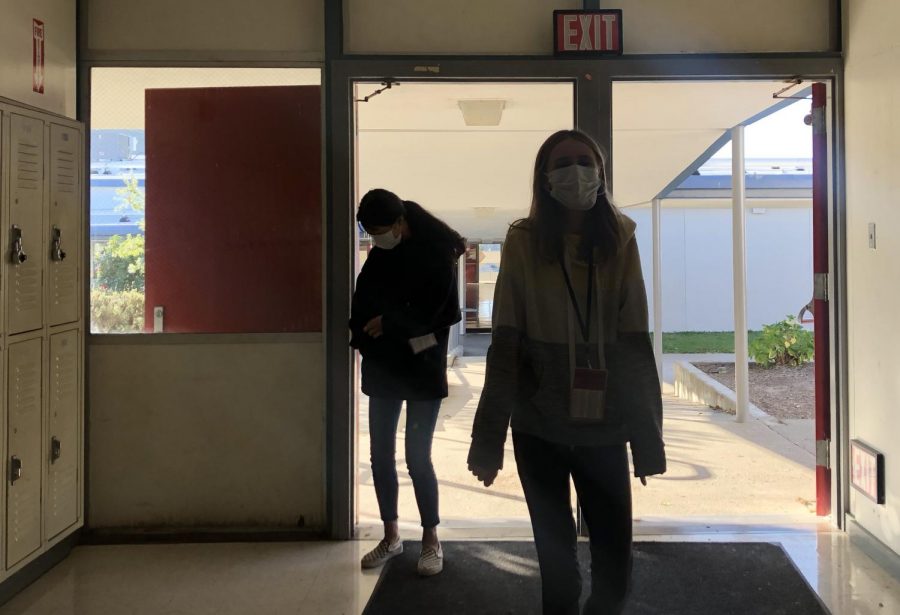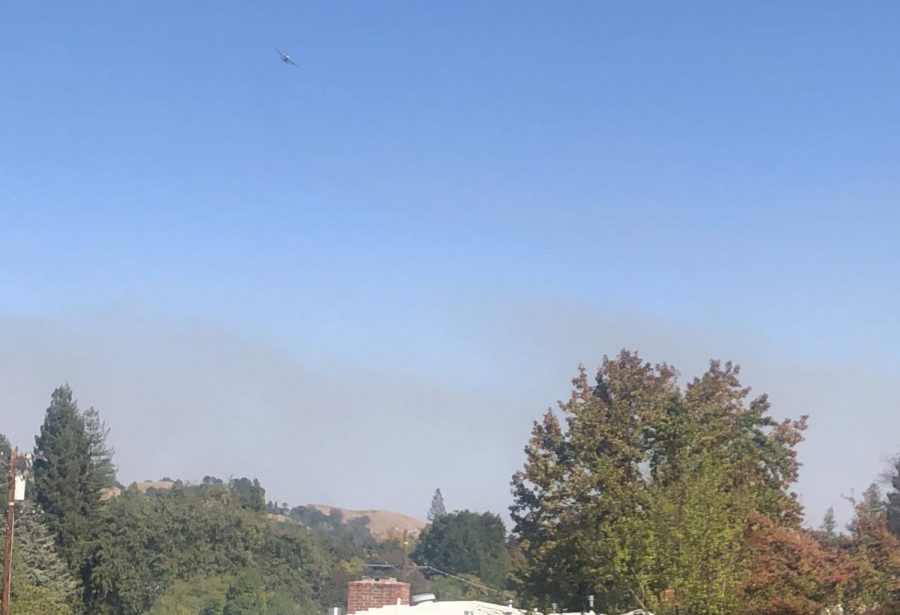Instruction Continues through High Fire Danger
November 7, 2019
Through Public Safety Power Shutoffs (PSPS), local fires, and poor air quality, school remained in session in Moraga on October 28.
“When we don’t have electricity, it does create a challenge, because we are so dependent on it,” said associate principal Laura Lee. “It does result in us having to cancel a lot of sports and events in the gym, where it’s just too dark to play.”
Physical education classes moved to the multi-use room as a result of the poor air quality caused by smoke from both fires in the north bay as well as those that broke out near Acalanes High School and highway 24 in Lafayette. “With the last power outage, they were able to do some outdoor stuff. Today, it’s a little different because we’re monitoring the air quality, so they’ve been in the MUR for PE,” said Lee.
After school sport activities were also canceled on October 28.
Cross country runner sophomore Marco Chao said that he had to get his run in elsewhere as the team was not allowed to meet on campus. A group of runners independently decided to go to 24-hour Fitness instead. Chao said that running on treadmills was much harder “but we got through it.” Though Chao said that his “mindset was not affected,” had the conditions and the prohibition on after-school sports persisted, it would have put a strain on his team.
While school was open, some classroom activities were modified. According to junior Ellie Olson, the power outage “absolutely” affected her classes because most of them “didn’t do anything when the power was off.”
History teacher Molly Kerr said that although her lesson plans were impacted “a little bit,” she was able to deliver instruction. Kerr added that, had the school lost power for a 2nd consecutive day on Tuesday, it would have been smart to cancel school. An email from the superintendent confirmed this, stating that there would be a possibility of no school had the power outage continued for more than 1 day.
“I think that it was 1 thing to quickly put together a 45-minute lesson plan, but then to start moving into a 90-minute lesson – without any teachers having access to technology, having the ability to make copies with the Xerox machine – it would’ve been really difficult,” said Kerr.
There was also both a logistical and emotional challenge for students who were impacted by the local fires.
Olson, who was evacuated for 4 hours on Sunday due to the Lafayette fire, said that it was “definitely scary.”
“We weren’t really in the evacuation zone at first but it was really close. It was across the freeway from us. The tennis club actually burned down completely, so we got really nervous,” said Olson. “There were planes going overhead – 2 helicopters and 4 planes – and they were dumping fire retardant. The police were in front of the neighborhood so we packed up all of our stuff and went to my mom’s studio.”
Given the persistently dry and windy conditions, there was also the concern for a fire breaking out in the open space near campus, especially given that the evacuation drill practice by students takes them to the athletic stadium, which is surrounded by open space and many older trees which could potentially act as fuel for a fire.
According to Lee, however, the school has “multiple evacuation sites. So if the fire is near the football field, we wouldn’t go that way. We’d go down to the lower field.”



